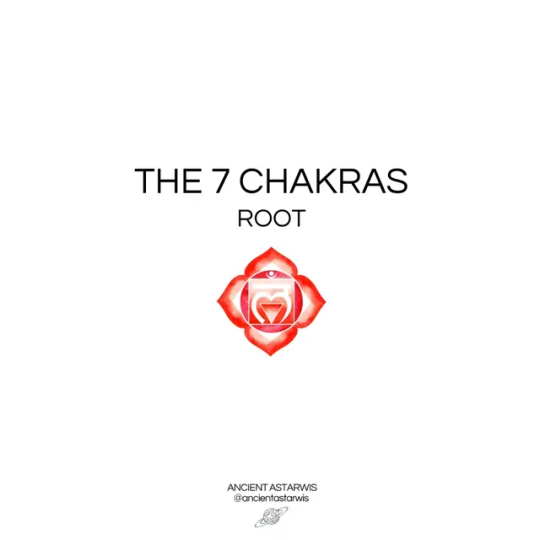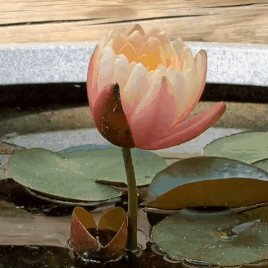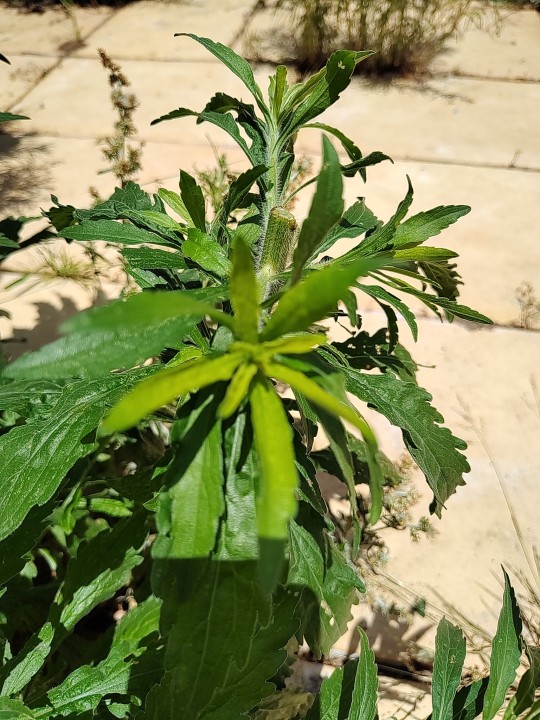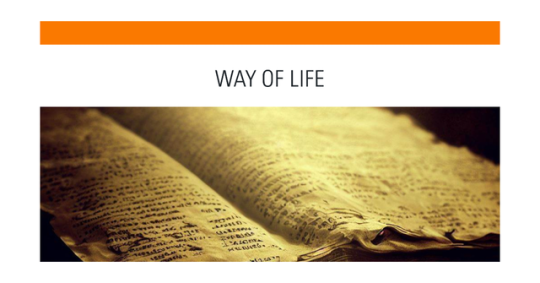#spiritualwisdom
Text

💫 These are new words of hope to uplift you today.
#gay#gay men#law of attraction#gay pride#same sex relationships#wisdom of the universe#wisdom of the oracle#spiritualawakening#spiritualwisdom#awakening#gay art#gay couple#gay marriage#same sex love#spiritualpath#spiritual awareness#spirituality
25 notes
·
View notes
Text
Root Chakra
The Root Chakra controls instincts, basic needs, safety and stability. Being the first chakra starting from below, it anchors the soul to the physical body, giving the individual a physical form and physical awareness. Groundedness and trust are sourced from this chakra.
Once open, the individual will be asked to re-examine their perception of and approach to safety and stability, in order to release trauma, self-esteem issues and fears. A new self will emerge in this process, with increased passion and courage.
The key to unlock the Root Chakra is CONFIDENCE ⭐
The vibration of this chakra resonates with the BODY 🤸
The fastest way to block this chakra is through FEAR 😨
The wisdom hidden in this chakra is of INDEPENDENCE 💪
*******************


Continuing with the series on the 7 Chakras, today I felt guided to post about Root. This is one of the hardest chakras to balance because most of what the Root Chakra manages is caused by external circumstances and/or people, which may cause a great amount of psychological damage if the situations persist for long periods of time. One of the interesting paradoxes of the Root is that it resonates with the body yet the damage shows in the mind. However, not everything is tragic about it. Since this is the simplest chakra, the solution is also relatively simple (theoretically): need nothing, fear nothing, let nothing define (affect) you.
Leave a like and reblog if you enjoyed this post 🍒 Thank you!
@ancientastarwis
#chakras#root chakra#spiritualgrowth#spiritual development#spiritualwisdom#spiritualguidance#spirituality
27 notes
·
View notes
Text
Say not, "I have found the truth," but rather, "I have found a truth."
Say not, "I have found the path of the soul." Say rather, "I have met the soul walking upon my path."
For the soul walks upon all paths.
The soul walks not upon a line, neither does it grow like a reed.
The soul unfolds itself, like a lotus of countless petals.
- Khalil Gibran, The Prophet

#food for thought#philosophy#quotes#quote#life lessons#think#book#human#life#book quotes#khalil gibran#the prophet#soul#good life#spirituality#spiritualwisdom#erudition369#lotus#truth
21 notes
·
View notes
Text



What do you need to know right now?
This is a small pick-a-card on what God wants you to know right now. Also at the end of your reading I will be pulling a card to answer a specific question that you have! So it’s kind of a 2 in 1! I hope you enjoy :))
Take some time now to breathe in and breathe out slowly and deeply. Once you feel grounded and ready you may pick from the photos above.
1- top left 2- top right 3- bottom image
Disclaimer- this is a general reading so only take what feels right. If it doesn’t feel right than maybe pick a different pile. If nothing resonates for you it’s okay! There’s plenty of other readers who may be right for you 🫶🏻🫶🏻 sending so much love, abundance and peace your way 🌤🌤🌤
Pile 1
You are about to gain a lot of money. I see you’ve been working your way towards this goal for a while now. Trying to build up clientele for your business?? Everything you have done in the past is now being circulated back to you. Good karma is on its way. There’s no need to worry about anything just stay patient, it’s coming in very very soon. If this is for a business and you have spent money on advertising just know that the money has been well spent and will be pushing more people towards you. What you have given is now going to be received. I see great great wealth coming in for you.
Answer to your question- There’s something better
Pile 2
If you have been waiting on an answer I see that this communication will be coming in. You’ve been pretty anxious about this, haven’t you? Communication you’ve been wanting is coming in soon for you and it’s going to make you feel a lot better. If you’ve been wanting someones attention I see them offering it to you very soon. Maybe they are replying after you haven’t heard from them in a while. Release any doubts or fears about this situation. Release any anxious thoughts about what you may have said to them or what they could say back to you. It’s going to be okay. Remind yourself that the things you say are important and deserve to be acknowledged. Clarity is coming in and you will feel victorious when this person communicates to you. If you have been waiting on a company or business to get back to you regarding the status of your application I see you being welcome aboard and being accepted into this new job or area you’ve been waiting to hear from.
Answer to your question- Success!
Pile 3
I feel the spirit wants you to connect with them. Connect with gratitude. Thank God for what you have in this moment and thank God for everything that continues coming in for you. I see you need to acknowledge how far you really are in life. How much you really have. You are so abundant already. Do not judge people who may look like they have more than you. Do not let others materials make you feel that you have less to give. You have an abundant amount of energy and love to share. Do not hold yourself back from giving yourself to others. The world needs you and you have something to share. I see you may have great wisdom that you could hold back from saying due to fears and limiting beliefs. Tell your friends that you love them. Tell that person how you feel.
Answer to your question- A year from now
#intuition#channeled#spiritualwisdom#intuitive#tarot community#earth angel#soul connection#pick a card#tarot#tarot reader#psychic#tarot reading#spiritualhealing#spirituality#free tarot#oracle message#what do you need to know#tarot messages#free tarot readings
168 notes
·
View notes
Text

Phantom🖤🐈⬛
#aesthetic#witchlife#witchythings#crystals#tarot cards#witch aesthetic#spiritualwisdom#spiritual#spiritualawakening#spiritualguidance#my cat#cat#kitten#black cat#phantom#pet#animal#cute
17 notes
·
View notes
Text
Magick of Australian Fleabane


Considered a noxious weed by agriculturalists, Fleabane and it's varieties are actually some of the most potent spiritual plants.
Used for exorcisms, protection and chastity magick, Fleabane is a great alternative to burning Sage for cleansing and Spiritual purposes as this baby packs a punch when it comes to cleansing negative energy.
It's completely resistant to pesticides which makes its protective quality incredibly strong and can grow in some of the most inhospitable environments, making it extremely resilient.
Harvest and dry it to use in regular smoke cleansing just like you would sage or other herbs.
Happy Witching
#australian pagan#witchcraft#witches#paganism#spiritualwisdom#mindfulness#pagan witch#spellcraft#witch community#spell work#fleabane#australian witchcraft#aussie witch#magick lessons#magick of fleabane#beginner witch#herbal witch#green witch#hecate
32 notes
·
View notes
Text
Igniting Creative Flow: Navigating the Digital Age with Spiritual Insight

Introduction:
In today's hyper-connected world, the constant barrage of information and stimuli can leave us feeling overwhelmed and creatively stagnant. Yet, amidst the chaos of the digital age lies a secret pathway to creative flow, one deeply rooted in spiritual insight. In this article, we'll explore the profound connection between spirituality and creativity, offering actionable strategies to integrate spiritual principles into our lives and reclaim our creative fire.
Understanding Creative Flow:
Creative flow is a state of heightened focus and productivity where individuals experience a seamless stream of ideas and inspiration. It is characterized by a sense of timelessness and effortless engagement with the creative process. However, in the digital age, distractions abound, making it increasingly challenging to access this state of flow and tap into our creative potential.
The Role of Spirituality:
Spirituality offers a unique lens through which to understand and cultivate creative flow. At its core, spirituality invites us to connect with something greater than ourselves, whether it be through meditation, prayer, or mindfulness practices. By aligning with this deeper source of inspiration, we can transcend the limitations of the ego and access a state of flow that is both liberating and transformative.
Connecting Spirituality to Creative Flow:
Spirituality and creativity are inherently intertwined, as both involve tapping into the realm of the unseen and allowing inspiration to flow freely. By integrating spiritual principles such as presence, surrender, and intuition into our creative process, we can overcome resistance and self-doubt, allowing our creativity to flourish.
Tips for Integrating Spirituality into Creativity:
Cultivate Presence: Begin each creative session with a mindfulness practice to anchor yourself in the present moment. By quieting the mind and tuning into your innermost being, you create space for inspiration to arise organically.
Embrace Surrender: Let go of the need to control the creative process and surrender to the flow of inspiration. Trust that the universe has a plan for your creativity and allow yourself to be guided by intuition rather than intellect.
Honor Your Inner Voice: Pay attention to the whispers of your soul and follow the guidance of your inner wisdom. Whether through journaling, meditation, or quiet reflection, make time to listen to the voice within and honor its creative impulses.
Connect with Nature: Spend time in nature to reconnect with the natural rhythms of the earth and tap into its abundant creative energy. Whether it's a walk in the park or simply sitting beneath a tree, allow yourself to be nourished by the beauty and tranquility of the natural world.
Practice Gratitude: Cultivate an attitude of gratitude for the gift of creativity and the opportunity to express yourself through your art. By acknowledging the blessings in your life, you open yourself up to receive even greater inspiration and abundance.
Conclusion:
In a world that often feels overwhelming and chaotic, spirituality offers a guiding light to navigate the creative process with grace and ease. By integrating spiritual principles such as presence, surrender, and intuition into our creative practice, we can transcend the limitations of the ego and access a state of flow that is both liberating and transformative. As we embark on this journey of creative exploration, may we embrace the wisdom of the ages and reclaim our creative fire in the digital age and beyond.
#CreativeFlow#DigitalAgeCreativity#SpiritualInsight#MindfulnessInnovation#InspiredCreativity#DigitalFlowState#SpiritualAwakening#CreativeExpression#DigitalMindfulness#SpiritualFlow#InspirationalInsight#CreativeJourney#DigitalTransformation#SpiritualGuidance#FlowStateArt#DigitalCreativity#SpiritualWisdom#CreativeProcess#DigitalInspiration#SpiritualFlowState
2 notes
·
View notes
Text
10 Different Islamic Quotes About The Allama Iqbal That Inspire Your Life❤❤❤||#muslimphilosopher
youtube
#AllamaIqbalQuotes#IslamicPhilosophy#SpiritualWisdom#PoeticInspiration#SelfRealization#IslamicHeritage#PoetPhilosopher#IslamicScholar#FaithJourney#IslamicValues#UnityInDiversity#CourageousLiving#DivineGuidance#LegacyOfWisdom#SpiritualEnlightenment#ReflectionsOnLife#EternalWisdom#VisionaryLeadership#SoulfulInspiration#LoveAndCompassion#IslamicTeachings#FaithInAction#ElevateYourSoul#InspirationalThoughts#InnerStrength#AllamaIqbal#Youtube
2 notes
·
View notes
Text
Why Suicide Is NEVER a good idea!
Compassionate Florence, I feel your grief and confusion and wish to bring you understanding. Whenever someone chooses to end their life unnaturally before their allotted time is up, they disrupt the natural karmic cycles that govern life and death and thus increase their karma for future incarnations. The suffering that comes to us, whether during our lives or at the end of life, is karma to be burned off. If we avoid this through suicide, whether it be assisted or otherwise, the "interest" of the unpaid karma is carried forward and multiplied so it becomes heavier. That is why suicide is never a good idea. Through suicide, we don't avoid suffering; we just make it worse. I have addressed suicide in a November 26, 2006 lecture titled "One Person Can Make a Big Difference" in Thailand. You may wish to watch this.
Supreme Master Ching Hai (vegan)
🎥 Excerpt from a Viewer's Heartline https://suprememastertv.com/en1/v/225922245375.html
💗 Please join Supreme Master Ching Hai to sincerely thank God Almighty for World Vegan, World Peace and souls’ Liberation 💗 Every day at 9:00 PM Hong Kong time 🙏
SupremeMasterTV.com
#SupremeMasterTV#SuicidePrevention#LifeMatters#MentalHealthAwareness#KarmaCycle#SpiritualWisdom#SupremeMasterChingHai#ChooseLife#SuicideAwareness#KarmicCycles#SuicideIsNeverTheAnswer#SpreadHope#WisdomFromWithin
3 notes
·
View notes
Text








3.29.2023 🦋🤍✨
#lgbtq#black boy joy#black gay men#black men#black boys#locjourney#melanin#mindfulliving#selfie#inspirational quotes#spiritualwisdom
12 notes
·
View notes
Text
Word anatomy of the day: responsibility
responsibility= (res)t + u(pon) + sen(si)ble + a(bility)
Responsibility is to rest upon your ability to be sensible.
E.g. Is it sensible to give your power away to others and then blame them for not meeting your needs?
—l.a.m.p
#wordsofwisdom#poeticstories#word of the day#word anatomy#poetry#poets on tumblr#poem#prose poetry#writeblrcafe#prose poem#new poets society#spilled poetry#poets corner#spiritual awakening#spiritualgrowth#spiritualwisdom#limitlessend#l.a.m.p
43 notes
·
View notes
Text

💫 Bruce J wants you to feel hopeful today.
#gay#gay men#law of attraction#gay pride#same sex relationships#wisdom of the universe#wisdom of the oracle#spiritualawakening#spiritualwisdom#awakening#happy pride 🌈#highervibes#husbandandhusband#higherfrequency#gay art#gay couple#gay marriage#freedom from religion#freedom from fear
26 notes
·
View notes
Text
THIRD EYE

These are a few messages for those that need to read or confirm their intuition:
Fearing your inner power is SETTLING.
Rejecting your purpose is SETTLING.
'What-iffing' your future reality is OVER WORRYING.
Accept, relax...and heal ✨🧬🌀
Message me to book a Psychic Abilities or 7 Chakras reading. Only 3 spots available.
When did your spiritual awakening occur? Mine happened in 2017.
Blessings, @ancientastarwis
#spiritualguidance#spiritualjourney#third eye#thirdeyeawakening#chakras#spiritual#third eye chakra#spiritualwisdom#spirituality
10 notes
·
View notes
Text

My personal guided meditation to opening your third eye is here (this is one of the best things I've done to open up mine! plus other stuff lol) For more guided meditations click here 💛
#third eye#metaphysical#manifestation#law of manifestation#manifestingmiracles#spiritualgrowth#positivity#meditate#higher self#consciousness#guided meditation#meditation#manifestingreality#self improvement#meditatedaily#spiritual development#spirituality#spiritualguidance#spiritualwisdom#spiritualawakening#spiritualism#mysticism#spiritualjourney#spiritualteacher
29 notes
·
View notes
Text
What chakra is in need of your attention?
What is keeping you blocked?

Hello friends :) I hope you are doing well. This is a new pick-a-card about what chakra may be in need of clearing blockages and how it may be affecting you at this time. Piles 1-3 ranging from left to right shown in image above :)
Disclaimer 🫶🏻 take what resonates with you and dismiss anything that doesn’t feel aligned to you. Energy is always flowing and changing so know that the energy these readings depict could change at any moment. Notice if something triggers you it could be a sign you need to focus more into that feeling and questioning, why is it a trigger for you and what emotion is being triggered?
Enjoy the reading :)) I surely hope you can find something positive to take with you 🫶🏻
Pile 1
It seems that your root chakra is off balance right now and is in need of attention. With this chakra being off balance you may be feeling out of control with things that are happening to you and around you during this time. In present moments you are facing life with an energy of accepting the pain others put you through. Accepting it as if it is yours to heal or that you somehow deserve to carry it. You feel that life is “just like this”, that this is “just how it is”. You let others unload their burdens onto your back because you know you can handle it. You carried so many people, so many burdens for so long. This could be carried through family or ancestral lineage or past lives. You have handled pain for so long in your life that you’ve learned how to carry it and still feel the light. What you need to know is that these energies are not yours to carry. A lot of the people you support would not do the same for you, they do not deserve your shoulder, they do not deserve your back. You feel so self sufficient but you currently block off your full self from blooming by letting others use you as a place to set their pain down. It’s causing you pain. Come back to yourself. Come back to a place where you can feel childlike wonderment again and let this pain go. Ask yourself questions like, “Can I empathize with this person right now?”, “Do I have the space in my energy field to let this person unload onto me?”, “Are my needs being met?” Spirit wants you to check in with yourself and take time to first reflect on your needs and your energy in these moments.
A manta you can repeat is “I take responsibility for where I now find myself in life as I move forwards.”
Pile 2
Your third eye chakra is in need of attention and clearing right now. With this chakra being off balance you may be finding it difficult to trust your own guidance and wisdom. You may be or may have felt shame or guilt in the past for being different and this caused you to close out your own intuitive abilities. You may have felt like an outcast for being different from others around you but i really see this energy lifting as you start trusting in your own wisdom. Spirit wants you to know that your differences are your gifts. I feel like the souls of your ancestors are really helping behind the scenes in your behalf. They strive to see you shining your light. Continue honoring them in your heart and asking for guidance, they’re still here for you even if you can’t see them. They want you to know that you are so accepted, supported and loved. You are heavily protected as well, you have nothing to fear. They want to remind you that materialistic items do not matter in the grand scheme of things. Connect back into your self with activities that put you into a meditative like state. This could be anything you love doing, something that makes your heart feel like it’s singing. It’s time to surrender to yourself. Great things are coming in for you. I feel money coming in.
A good manta for you at this time is “I trust in a higher source and I honor my direct connection to it.”
Pile 3
I feel that your crown chakra is in need of attention right now. With the crown chakra being out of alignment you could be easily irritated or emotionally unbalanced. You could be taking what others do or say personally and have started to isolate yourself. You could be isolating due to having exceptions of certain actions from others. You could also be expecting others or a specific person to reach out to you first after you have isolated or cut off contact from them, or they cut off from you. You have since been waiting on this person to come back. You stand alone hoping to be saving the spot next to you for them. I see that you are thinking about a certain feeling this person gave you, spirit wants you to know that it’s okay to stop comparing people to past people you’ve known. What is really blocking you is this waiting energy. You keep waiting for something, someone one or a spark to rekindle and it’s in turn blocking new amazing opportunities from coming in. They could be presented to you but you don’t even see them because you are focused on comparing new opportunities to this feeling or situation you had in the past. And nothing will simply ever be repeated. Even with this certain person. Energy is always fluctuating and no experience is ever the same. These new opportunities and endeavors are not going anywhere either they continue to come into your life hoping you take a leap of faith and discover something new. It’s okay to be scared. It’s also okay to talk about what scares you. Spirit wants you to know that you can always talk to them, or to people who love you. It’s also very strong of you to talk about your feelings. Spirit is so proud of you for how far you’ve already come. Accept help when it is offered and ask for it when it is needed. Try not to isolate yourself any longer. It is time to start a new day. You will be so so happy when you take a leap of faith.
A mantra you can try using is, “Instead of resisting any emotion, I enter it fully, embrace it and see through my resistance.”
🤍🫶🏻🤍🫶🏻 that’s all for tonight’s reading 🫧 did it resonate with you? Feel free to let me know, I love hearing any feedback ☺️
Thank you so much for reading this guided message. 🫶🏻 I hope you beautiful friends have an amazing time where ever you are right now and feel the love I’m sending each one of you🤍
#pac#intuition#soul connection#channeled#earth angel#spiritualwisdom#tarot#intuitive#pick a card#tarot community#tarot reader#tarot reading#psychic#free tarot#love#spiritualhealing#spirituality#crystals#messagesfromtheuniverse#tarot messages#divine messages#chakras#root chakra#third eye#third eye chakra#crown chakra#evil eye#protected#angels
232 notes
·
View notes
Photo

New Post has been published on https://www.knewtoday.net/the-vedas-sacred-scriptures-of-hinduism/
The Vedas: Sacred Scriptures of Hinduism

The Vedas are the ancient and revered scriptures of Hinduism, embodying the spiritual wisdom and religious practices of the ancient Indian civilization. Composed in Vedic Sanskrit, these texts have been passed down through generations for thousands of years and continue to hold immense significance in Hindu religious and philosophical traditions.
The word “Veda” originates from the Sanskrit root “vid,” which means knowledge or wisdom. Thus, the Vedas are often regarded as a divine revelation, representing the profound insights and eternal truths perceived by ancient seers and sages.
Believed to have been composed between 1500 and 500 BCE, though their oral tradition may extend even further back in time, the Vedas consist of four main collections known as Samhitas. These collections are the Rigveda, Yajurveda, Samaveda, and Atharvaveda. Each Samhita serves a distinct purpose, encompassing hymns, prayers, rituals, and philosophical discourses.
The Rigveda, the oldest and most significant of the four, contains hymns dedicated to various deities, celebrating cosmic forces and natural phenomena. It offers a glimpse into the religious and social life of the ancient Vedic society.
The Yajurveda focuses on the performance of rituals and sacrifices, providing detailed instructions and verses to guide priests during religious ceremonies. It emphasizes the importance of correct recitation and the proper execution of rituals for spiritual attainment.
The Samaveda centers around melodies and chants derived from the Rigveda. It is primarily concerned with the musical aspects of rituals, elucidating the power of sound and rhythm in invoking divine energies.
The Atharvaveda encompasses a diverse range of hymns, spells, and incantations. It addresses practical aspects of life, including healing, protection, and averting misfortunes. It also delves into philosophical and ethical teachings.
Additionally, the Vedas comprise supplementary texts known as Brahmanas, Aranyakas, and Upanishads. The Brahmanas provide ritualistic explanations, the Aranyakas serve as texts for hermits and seekers in forest retreats, while the Upanishads delve into profound metaphysical and spiritual concepts, exploring the nature of reality, self, and ultimate truth.
The Vedas hold a central position in Hinduism and are regarded as the foundational scriptures upon which the diverse branches and philosophies of Hindu thought have been built. They have influenced religious rituals, philosophical schools, and ethical principles throughout history, shaping the religious practices and beliefs followed by millions of Hindus worldwide.
Today, the Vedas continue to inspire seekers of wisdom, offering profound insights into the nature of existence and guiding individuals on their spiritual journeys. They stand as a testament to the ancient heritage and rich spiritual legacy of Hinduism, inviting contemplation, devotion, and the pursuit of eternal truth.
Rigveda
The Rigveda is the oldest and most important collection within the Vedas, consisting of hymns and prayers composed in Vedic Sanskrit. It is considered one of the oldest religious texts in the world, with origins dating back more than 3,500 years ago.
Structure and Contents:
The Rigveda is divided into ten books, known as Mandalas, and contains a total of 1,028 hymns, or Suktas, attributed to different sages and seers known as rishis. These hymns are addressed to various deities, such as Agni (the god of fire), Indra (the king of gods and the god of thunder and war), Varuna (the god of cosmic order and justice), and many others.
The hymns in the Rigveda are written in poetic and metaphorical language, often using intricate metaphors, symbolism, and allegories. They express deep reverence for nature, cosmic forces, and the divine, seeking blessings, protection, and guidance from the gods.
Themes and Significance:
The Rigveda covers a wide range of themes and topics, including creation myths, praises to the gods, nature worship, cosmology, ethical values, social order, and the importance of rituals. It reflects the religious and social practices of Vedic society, providing insights into their beliefs, rituals, and worldview.
The hymns of the Rigveda offer a glimpse into the religious and spiritual experiences of the ancient Vedic seers. They express a sense of wonder and awe towards the natural world, seeking to understand the mysteries of existence and the relationship between humanity and the divine.
Philosophical Teachings:
While the Rigveda is primarily a collection of hymns, it also contains philosophical insights and contemplative reflections. Some hymns explore the nature of reality, the concept of Brahman (the ultimate reality), and the pursuit of knowledge and truth. They discuss philosophical questions regarding the origins of the universe, the nature of existence, and the purpose of human life.
Influence:
The Rigveda has had a profound influence on Hindu religious, social, and cultural practices. Its hymns and rituals form the foundation of the Vedic sacrificial ceremonies and have shaped the development of Hinduism over the centuries. The concepts and ideas found in the Rigveda have influenced subsequent Hindu scriptures, philosophical schools, and religious practices.
The Rigveda is not only a religious text but also a significant literary and historical document. It provides valuable insights into the early Vedic civilization, its language, social structure, and religious practices. Scholars and researchers continue to study and interpret the Rigveda to deepen their understanding of ancient Indian culture and religious traditions.
Overall, the Rigveda stands as a testament to the ancient wisdom, poetic brilliance, and spiritual quest of the Vedic seers, offering a profound glimpse into the religious and philosophical thought of the time and contributing to the rich tapestry of Hindu spirituality.
Yajurveda
The Yajurveda is one of the four main collections of the Vedas, the ancient scriptures of Hinduism. It is primarily focused on the performance of rituals and sacrifices, providing instructions, formulas, and verses for priests to follow during religious ceremonies. The Yajurveda is written in Vedic Sanskrit and is considered a crucial guidebook for priests or “yajurvedis” to carry out sacrificial rites.
Structure and Contents:
The Yajurveda is divided into two main branches or versions: the Krishna Yajurveda (Black Yajurveda) and the Shukla Yajurveda (White Yajurveda). The Krishna Yajurveda contains prose and verse portions mixed together, while the Shukla Yajurveda consists primarily of prose sections. Both versions contain rituals and formulas for the performance of sacrifices, but they differ in arrangement and presentation.
The Yajurveda contains hymns and mantras, referred to as “Yajus,” which are recited during various stages of sacrificial rituals. These mantras are precise and formulaic, serving as instructions for the priests regarding the actions to be taken, the offerings to be made, and the recitation of prayers and invocations.
Themes and Significance:
The Yajurveda emphasizes the importance of correct pronunciation and the precise execution of rituals. It provides detailed descriptions of various rituals, including the preparation of altars, the kindling of sacred fires, the offering of oblations, and the chanting of specific mantras. The rituals outlined in the Yajurveda were performed as acts of devotion, seeking blessings, and establishing a harmonious relationship between humans and deities.
The Yajurveda also contains philosophical and moral teachings. It emphasizes the interconnectedness of all beings and the importance of living in harmony with the natural and cosmic order. It highlights the concept of dharma (righteousness) and encourages ethical conduct, social responsibility, and spiritual growth.
Influence:
The Yajurveda has played a significant role in shaping Hindu religious practices and rituals. It served as a practical guide for priests in performing sacrifices and ceremonies, ensuring that rituals were carried out with precision and adherence to tradition.
While the Yajurveda is primarily concerned with rituals, it also contains philosophical insights and contemplations on the nature of the universe, the relationship between the divine and the mortal, and the pursuit of spiritual enlightenment. These philosophical aspects have contributed to the development of Hindu philosophy and provided a foundation for later texts, such as the Upanishads.
The teachings of the Yajurveda continue to be influential in contemporary Hindu rituals, especially in the performance of religious ceremonies, including marriages, fire sacrifices, and other religious rites. Its mantras and rituals are still recited and followed by priests and practitioners in traditional Vedic ceremonies.
In summary, the Yajurveda is a crucial Vedic text that provides detailed instructions and formulas for performing rituals and sacrifices. It holds significance in preserving ancient Vedic traditions, promoting ethical values, and guiding practitioners in their spiritual journey and devotion to the divine.
Samaveda
The Samaveda is one of the four main collections of the Vedas, the ancient scriptures of Hinduism. It is primarily focused on the musical aspects of rituals and sacrifices, containing a collection of melodies and chants derived from the Rigveda. The Samaveda is written in Vedic Sanskrit and is considered the earliest known musical text in the world.
Structure and Contents:
The Samaveda consists of a compilation of melodies and chants, known as Samans, which were sung during Vedic rituals. These chants are derived from the hymns of the Rigveda but are set to melodic patterns and rhythms. The melodies were sung by a group of priests called the Samavedins, who were responsible for the musical aspects of the rituals.
The Samaveda is organized into two main sections: the Purvarchika (First Archika) and the Uttararchika (Later Archika). The Purvarchika contains melodies from the Rigveda, while the Uttararchika comprises additional melodies specific to the Samaveda. Each section is further divided into chapters and subsections.
Themes and Significance:
The Samaveda places great importance on the musical recitation of the Vedic hymns. It focuses on the precise chanting of the mantras, the correct pronunciation of syllables, and the modulation of the voice to create a melodic and rhythmic flow. The melodies and chants of the Samaveda were believed to have a profound impact on the mind, invoking specific energies and facilitating the connection between humans and the divine.
The Samaveda also highlights the power of sound and its ability to evoke spiritual experiences. It emphasizes the concept of Nada Brahman, the divine essence manifesting as sound vibrations. The Samaveda recognizes that the musical recitation of the Vedic hymns can lead to a transcendental experience, helping individuals attune themselves to cosmic harmony and experience a sense of unity with the divine.
Influence:
The Samaveda has had a significant influence on the development of Indian classical music and its spiritual dimension. The musical patterns and techniques found in the Samaveda served as the foundation for the melodic structures and ragas in Indian classical music. The concept of using sound as a means of spiritual elevation and self-realization is a core principle in Indian music and can be traced back to the Samaveda.
The Samaveda’s emphasis on the power of sound and its connection to the divine has also influenced the practice of chanting and mantra recitation in Hinduism. Chanting sacred verses and mantras is considered a potent spiritual practice, believed to have transformative effects on the mind, body, and spirit.
While the Samaveda may not be as widely studied or practiced as the other Vedas, its musical and spiritual legacy continues to resonate in Hindu traditions. Its melodies and chants are occasionally performed in religious ceremonies and festivals, preserving the ancient musical heritage and the profound spiritual significance of sound in the Vedic tradition.
In summary, the Samaveda is a Vedic text dedicated to the musical recitation of Vedic hymns. It highlights the power of sound, melodies, and chants to create a sacred atmosphere and facilitate a connection with the divine. Its influence can be seen in the development of Indian classical music and the continued practice of chanting in Hindu rituals and spiritual disciplines.
Atharvaveda
The Atharvaveda is one of the four main collections of the Vedas, the ancient scriptures of Hinduism. It is distinct from the other Vedas in terms of its content and style. While the other three Vedas (Rigveda, Yajurveda, and Samaveda) primarily focus on hymns, rituals, and chants, the Atharvaveda includes a compilation of hymns, spells, and incantations for practical purposes.
Structure and Contents: The Atharvaveda is divided into twenty books, known as Kandas, and contains a total of 730 hymns or Suktas. These hymns are attributed to various rishis (seers) and are written in Vedic Sanskrit. The Atharvaveda is believed to be a later addition to the Vedic texts, likely composed around 1000 BCE.
Unlike the other Vedas, the Atharvaveda incorporates a broader range of topics and addresses practical aspects of life. It includes hymns and spells for healing, protection, exorcism, fertility, prosperity, and averting misfortunes. The hymns also touch upon social and ethical issues, as well as philosophical and metaphysical themes.
Themes and Significance: The Atharvaveda encompasses a diverse array of themes and rituals. Some of the prominent themes found within the Atharvaveda include:
Healing and Medicine: The Atharvaveda contains numerous hymns and spells for healing ailments, both physical and mental. It includes prayers and incantations for curing diseases, invoking the healing powers of various deities and natural elements.
Protection and Averting Evil: The Atharvaveda includes spells and rituals for protection against evil forces, black magic, and negative energies. These hymns and incantations aim to shield individuals, homes, and communities from harm and ill fortune.
Social and Domestic Life: The Atharvaveda addresses various aspects of domestic and social life. It provides guidance on marital relationships, childbirth, family harmony, agriculture, and general well-being.
Ethical and Philosophical Teachings: Alongside the practical spells and rituals, the Atharvaveda includes hymns that explore ethical values, righteous conduct, and philosophical reflections. It delves into the nature of reality, the meaning of life, and the pursuit of spiritual knowledge.
Influence:
Atharvaveda’s practical approach and focus on everyday concerns have made it relevant in diverse aspects of Hindu culture and society. Its spells and rituals are still practiced by certain communities and individuals seeking remedies, healing, and protection. Some of the practices and beliefs associated with traditional folk medicine and folk rituals in India can be traced back to the Atharvaveda.
The philosophical and ethical teachings found within the Atharvaveda have also contributed to the development of Hindu thought and spirituality. The ethical principles and reflections on the nature of existence continue to inspire philosophical inquiry and spiritual contemplation.
While the Atharvaveda is sometimes considered distinct from the other Vedas due to its content and style, it remains an essential part of the Vedic tradition. Its inclusion in the Vedas testifies to the rich and diverse tapestry of ancient Indian wisdom and showcases the practical and spiritual dimensions of Vedic knowledge.
In summary, the Atharvaveda stands apart from the other Vedas with its hymns, spells, and incantations for practical purposes. It addresses healing, protection, social life, and philosophical reflections. The Atharvaveda’s influence can be seen in healing practices, rituals, and philosophical contemplations that continue to resonate in Hindu culture and spirituality.
#AncientIndianCivilization#Atharvaveda#Hinduism#HinduTraditions#Philosophy#ReligiousTexts#Rigveda#Rituals#SacredScriptures#Samaveda#SpiritualWisdom#Vedas#VedicSanskrit#Yajurveda
2 notes
·
View notes